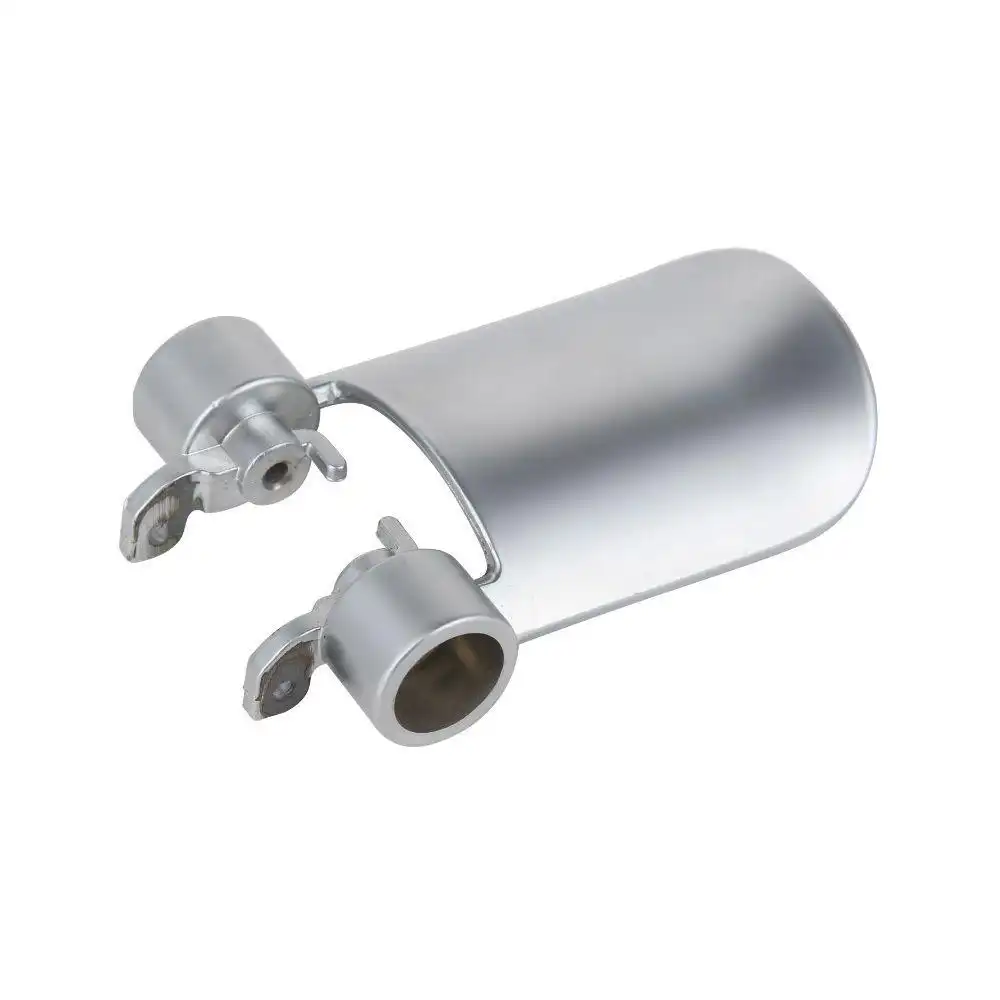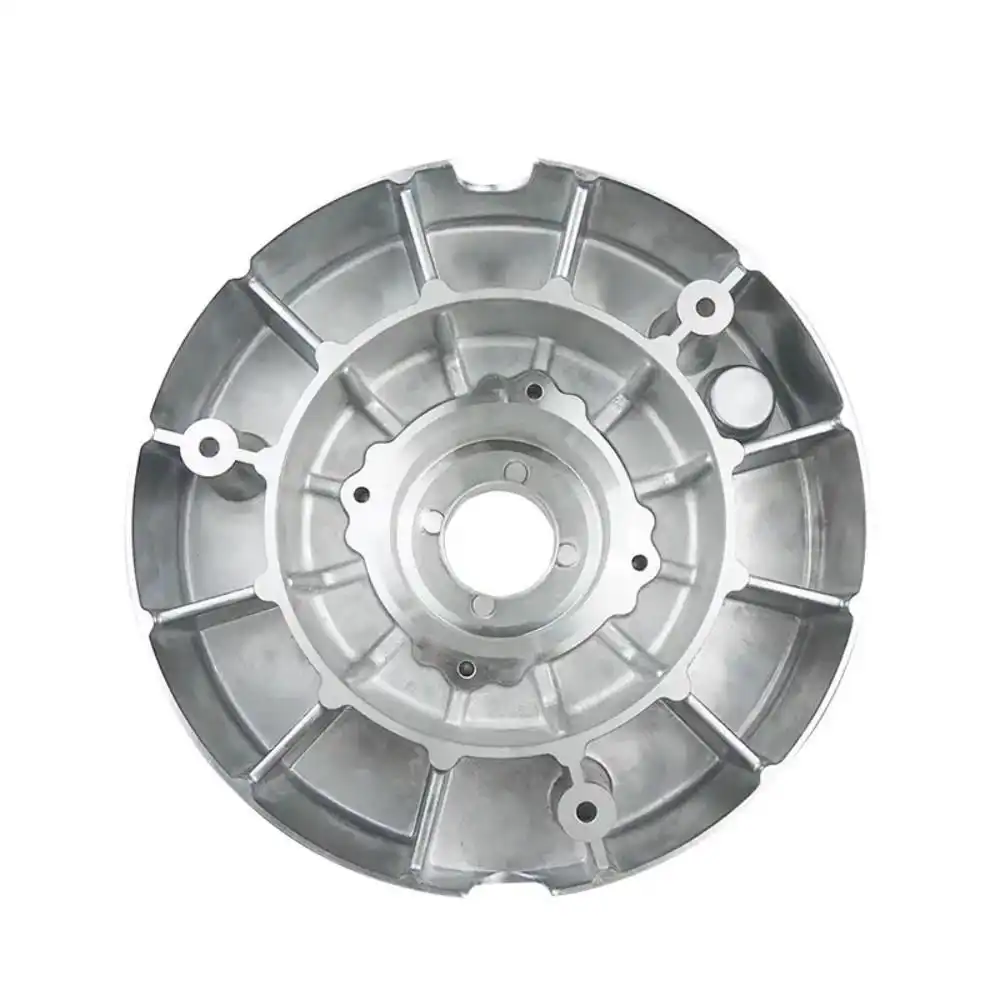Die casting plays a pivotal role in high-volume manufacturing, especially when producing precision parts with tight tolerances. Among the most commonly used die casting metals, zinc and aluminum stand out for their unique material properties and wide application range. But when it comes to choosing between zinc die casting and aluminum die casting, there’s no one-size-fits-all answer.
In this guide, we’ll compare these two materials across key factors like mechanical strength, cost, machinability, surface finish, and long-term tooling implications—so you can make an informed decision based on engineering needs rather than guesswork.
Zinc Die Casting Overview

Zinc Die Casting
Zinc die casting is often favored for small, complex parts that demand dimensional stability and excellent surface quality. Commonly used alloys include Zamak 3, Zamak 5, and ZA-8, all known for their tight tolerance capabilities and exceptional castability.
Advantages of Zinc Die Casting
- High precision: Ideal for net-shape or near-net-shape components
- Thin walls possible: Walls as thin as 0.3 mm are achievable
- Superior surface finish: Ideal for parts requiring plating or fine cosmetic quality
- Long die life: Zinc’s low casting temperature results in minimal mold wear—often exceeding 1 million cycles
- Faster cycle times: Due to rapid solidification
Zinc is often used in consumer electronics, automotive connectors, medical devices, and enclosures where tolerance and aesthetics matter more than structural strength.
Aluminum Die Casting Overview
Aluminum-Die-Casting
Aluminum die casting is typically chosen for structural parts where weight, thermal performance, and corrosion resistance are critical. Common alloys include A380, ADC12, and A413.
Advantages of Aluminum Die Casting
- Lightweight: Aluminum’s density is roughly 2.7 g/cm³ vs zinc’s 6.6 g/cm³
- Higher strength-to-weight ratio: Suitable for load-bearing applications
- Excellent thermal and corrosion resistance: Ideal for heat sinks, engine housings, and outdoor products
- Recyclability: Aluminum maintains strength over multiple reprocessing cycles
However, aluminum requires thicker wall sections (typically ≥1.5 mm) and higher clamping force due to higher casting pressures.
Zinc vs Aluminum: Feature Comparison Table
| Feature | Zinc Die Casting | Aluminum Die Casting | Engineering Remarks |
|---|---|---|---|
| Density | 6.6 g/cm³ | 2.7 g/cm³ | Aluminum is much lighter—ideal for mobile components |
| Tensile Strength | ~300 MPa | ~450 MPa (A380) | Aluminum provides higher structural integrity |
| Minimum Wall Thickness | ~0.3 mm | ~1.5 mm | Zinc excels in fine-detail precision |
| Die Life | Up to 1,000,000 shots | Typically 100,000–300,000 shots | Lower casting temps extend zinc die life |
| Surface Finish | Very smooth, good for plating | Good, often needs painting or coating | Zinc better for high-end cosmetic parts |
| Tooling Cost Recovery | Longer, but more durable | Faster, but requires more frequent retool | Depends on part volume and complexity |
| Thermal Conductivity | Lower | Higher | Aluminum ideal for heat-dissipating parts |
Cost and Production Considerations
At first glance, aluminum die casting appears more economical due to its lower raw material cost. However, this is misleading in high-volume scenarios. Zinc molds last much longer, reducing tooling costs per part over time.
Also, zinc allows for finer features, potentially eliminating secondary operations like machining or polishing—this can drastically reduce total cost of ownership (TCO), especially in decorative or functional small parts.
For example:
- A consumer device casing made from zinc may go directly from casting to assembly.
- An aluminum equivalent may need machining and coating to match surface and tolerance requirements.
Design and Machinability Considerations
From a design-for-manufacturing (DFM) perspective:
- Zinc excels in complex geometries, undercuts, snap-fits, and tight assembly constraints. It’s a favorite for engineers designing micro-mechanical housings or aesthetic covers.
- Aluminum is preferred in structural parts—think transmission housings or EV battery enclosures—where weight reduction and strength are mission-critical.
Machining-wise, both materials are workable, but zinc is easier to machine, especially for precision threads or inserts. This reduces tool wear and CNC cycle time.
Which to Choose? Use Case Breakdown
✔ Use Zinc Die Casting When:
- High dimensional precision is required
- Parts are small to medium size with fine features
- Surface finish matters (e.g., plating, polishing)
- Extremely high volumes are expected
- Minimal post-processing is preferred
Examples: Camera mounts, appliance knobs, automotive clips, wearable device parts
✔ Use Aluminum Die Casting When:
- You need structural strength and low weight
- Part complexity is moderate, but wall strength matters
- Operating environment involves heat or corrosion
- Lighter logistics or transport is needed
Examples: Engine components, lighting enclosures, aerospace brackets, motor housings
Sustainability and Environmental Impact
Both aluminum and zinc are highly recyclable, but zinc has a lower melting point (~420°C vs aluminum’s ~660°C), resulting in lower energy consumption during casting. Aluminum, on the other hand, has an extremely mature recycling infrastructure, especially in the automotive and construction sectors.
Bottom line: For sustainability-focused design, both materials are viable—with trade-offs between carbon footprint (zinc wins) and material circularity (aluminum wins).
Conclusion: Which Die Casting Material Wins?
There is no universal answer—only the right choice for the job.
- If you’re manufacturing high-volume, compact parts with intricate details and cosmetic requirements, zinc die casting likely wins.
- If your part must withstand mechanical loads, exposure to heat, and must remain lightweight, aluminum die casting is the logical choice.
An engineer’s role is to balance function, cost, manufacturing limits, and life cycle. Material selection in die casting is not just about chemistry—it’s about fit for purpose.
FAQs
1. Which is stronger: zinc or aluminum die casting?
Aluminum offers higher tensile strength, especially in structural parts.
2. Is zinc die casting cheaper than aluminum?
For high volumes and high-precision parts, zinc often proves more economical due to long die life and fewer secondary operations.
3. Which has better surface finish?
Zinc provides superior cosmetic finish, suitable for plating and polishing.
4. Can aluminum die castings be used for tight-tolerance parts?
Yes, but zinc achieves tighter tolerances out of the mold with less machining.
5. Which is more sustainable?
Zinc uses less energy to cast; aluminum has broader recycling infrastructure.



